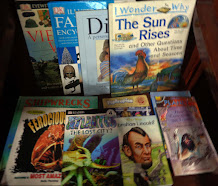Friday, September 18, 2015
"Build your home library and nurture knowledge to grow into wisdom." - avr
Wednesday, September 16, 2015
BIOLOGY in the Epic Biag ni Lam-ang
Young coconut fruits, guavas
and other oranges which she ate.

[Young coconut or buko (Cocos nucifera), bayabas or guava (Psidium guajava). lolokisen or orange (Citrus nobilis)]
Newly harvested buko or young coconut is popular in any part of the country and in the tropical region, for its refreshing water and nutritious soft flesh.
(6)
Panapana and maritangtang


Spiked and spineless sea urchin
"Go and see the bamboos
And Namogan said, "My
(20)
[Dangla is lagundi (Vitex lagundi) a medicinal plant, guava here is used as medicinal plant.] (photo)
Acknowledgement" Internet photos
Sunday, September 13, 2015
Emptiness at Sundown - a Challenge
Emptiness at Sundown - a Challenge
"Wonder how Rodin created from bare rock The Great Thinker." avr
Dr Abe V Rotor
Sunset, Lemery Batangas, 2018
How can I be romantic when the world is sad and lonely,
the sea in its ebb, the air still, save a passing breeze?
How can I love the classics, the timelessness of their beauty,
the deafening silence, neither music nor of peace?
How can I appreciate humanities, man's creativity,
peep into the biblical Garden of his birth?
How can I amend my evil ways, rise from human frailty
with the dying sun, soon to abandon the earth?
I am lesser than those who instead found opportunity
to explore the deep source where love and hope never cease.
Monet taming a fiery sunset into a lovely beauty,
and on wasteland Wangari planted a million trees.
I wonder how Rodin created from bare rock The Great Thinker;
Fleming by serendipity found from a moldy culture -
the life-saving Penicillin, a most potent drug ever,
while Thoreau alone wrote a treaty of man and nature.
Crowning glory, masterpieces were not at all born in bed,
so with man faced with the impossible to solve,
when a tree stands alone leafless, the sea in ebb;
and I, I wait for darkness envelop my world. ~
Wednesday, September 9, 2015
Thursday, September 3, 2015
Vegetable Fern (Pako') - Athyrium esculentum
For a change, try fern vegetable. It's good for the family; It is rich in minerals and high in food value.
Dr Abe V Rotor
Living with Nature - School on Blog
Pako' abounds in the wild - fields, forests and on river banks. It is often found growing on the backyard and idle lots. Because many people have learned to eat pako', it is now widely sold in public markets just like any vegetable.
Gather the young leaves or fronds which are eaten either raw or cooked. They may be used as salad with various dressings, as leafy vegetable, or as ingredient of stews.
At home we prefer Ilocos Vinegar for dressing, with chopped onions, and a dash of salt. Try fresh tomato instead of vinegar.
When cooking bulanglang or diningding, include pako' singly ir in combination with other vegetables like spinach and eggplant. Don't forget sweet potato (kamote) in cubes as thickening (buridibud).


Mineral Content and Food Value of fresh Athyrium esculentum (percent)
 Athyrium esculentum
has twce- or thrice-pinnate frond which are 50 to 80 cm long and about
half as wide. The pinnules are pointed, coarsely serrate, and about 2
to 5 cm long. The plant is abundantly distributed in the Philippines
growing on gravelly bars and banks of streams. It is also found
growing widely from India to Polynesia.
Athyrium esculentum
has twce- or thrice-pinnate frond which are 50 to 80 cm long and about
half as wide. The pinnules are pointed, coarsely serrate, and about 2
to 5 cm long. The plant is abundantly distributed in the Philippines
growing on gravelly bars and banks of streams. It is also found
growing widely from India to Polynesia. Pako' (Athyrium esculentum) growing habit
 Another fern is edible. This is Ceratopteris thalictroides,
a stout fern with leaves that are divideed into numerous narrow
sgments.. It is aquatic and it actually grows on mud. It is also found
all over the Philippines and in all tropical countries.
Another fern is edible. This is Ceratopteris thalictroides,
a stout fern with leaves that are divideed into numerous narrow
sgments.. It is aquatic and it actually grows on mud. It is also found
all over the Philippines and in all tropical countries. - Western sword fern, Polystichum munitum, "king of northwest ferns."
- Bracken, Pteridium aquilinum, found worldwide (Health Warning)
- Ostrich fern, Matteuccia struthiopteris, found in northern regions worldwide, and the central/eastern part of North America (Health Warning)
- Lady fern, Athyrium filix-femina, throughout most of the temperate northern hemisphere.
- Cinnamon fern or buckhorn fern, Osmunda cinnamomea, found in the eastern parts of North America, although not so palatable as ostrich fern.
- Royal fern, Osmunda regalis, found worldwide
- Midin, or Stenochlaena palustris, found in Sarawak, where it is prized as a local delicacy
- Zenmai or flowering fern, Osmunda japonica, found in East Asia





















